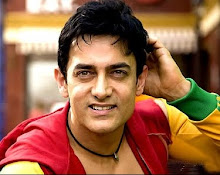
MOHANDAS KARAMCHAND GANDHI – (2nd October 1869 – 30th January 1948)
He was the pre-eminent political and spiritual leader of India during the movement of Indian Independence, firmly founded upon Ahimsa / Non-violence – Which led India to Independence and inspired movements took across the world nations. He was called to as Mahatma – GREAT SOUL first called by Rabindranath Tagore and as BAPU.
He is honoured in India as FATHER OF THE NATION and his birthday 2nd October, is celebrated as Gandhi Jayanthi, a national holiday – and International Day of Non-Violence – officially.
Gandhi employed civil disobedience – non-violent – expatriate lawyer in South Africa, during the Indian community’s struggle for civil rights. After his return to India in 1915, he organized protests by peasants, farmers, and urban laborers concerning excessive Land-Tax and discrimination. After assuming leadership of the Indian National Congress in 1921, Gandhi led nationwide campaigns to ease poverty, expand women’s rights, build religious and ethnic amity, end untouchability, and increase economic self-reliance. Above all, he aimed to achieve Independence or Swaraj of India from foreign domination.
Gandhi famously led his followers in the Non-Cooperation Movement – that protested the British-imposed salt tax with the 400 km (240 miles) Dandi Salt March in 1930. In 1942, he commenced the Quit India Civil Disobedience Movement demanding immediate independence for India. Gandhi spent a number of years in Jail in both South Africa and in India.
As a practitioner of ahimsa, he sore to speak the truth and advocated that other do the same. He lived modestly in a self-sufficient residential group and wore the Indian Traditional Dhoti and Shawl, woven with his self spun yarn. He ate simple vegetarian food, eventually adopting a fruitarian diet, and undertook long fasts as means of both self-purification and social protest
On 30th January 1948, Gandhi was shot while he was walking to a platform from which he was to address a prayer meeting. The assassin, Nathuram Godse, was a Hindu nationalist with links to the extremist Hindu Mahasabha, who held Gandhi responsible for weakening India by insisting upon a payment to Pakistan. Godse and his co-conspirator Narayan Apte were later tried and convicted, they were executed on 15th November 1949.
Gandhi’s memorial, at New Delhi, bears the epigraph, “HE RAM”, which can be translated as “OH GOD”. These are widely believed to be Gandhi’s Last words after he was shot

